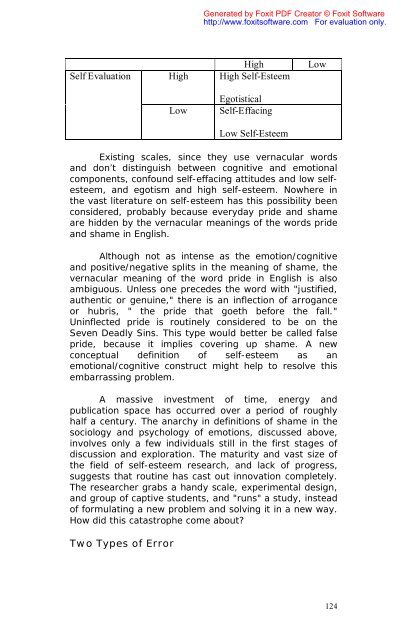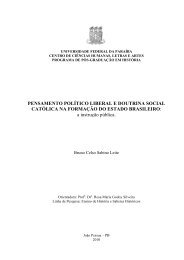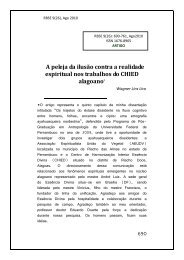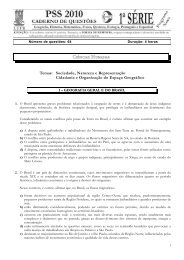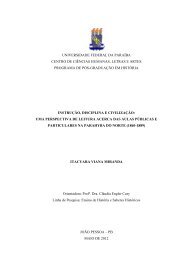abril de 2004 - CCHLA - Universidade Federal da ParaÃba
abril de 2004 - CCHLA - Universidade Federal da ParaÃba
abril de 2004 - CCHLA - Universidade Federal da ParaÃba
Create successful ePaper yourself
Turn your PDF publications into a flip-book with our unique Google optimized e-Paper software.
Generated by Foxit PDF Creator © Foxit Softwarehttp://www.foxitsoftware.com For evaluation only.Self EvaluationHighHighHigh Self-EsteemLowLowEgotisticalSelf-EffacingLow Self-EsteemExisting scales, since they use vernacular wordsand don’t distinguish between cognitive and emotionalcomponents, confound self-effacing attitu<strong>de</strong>s and low selfesteem,and egotism and high self-esteem. Nowhere inthe vast literature on self-esteem has this possibility beenconsi<strong>de</strong>red, probably because every<strong>da</strong>y pri<strong>de</strong> and shameare hid<strong>de</strong>n by the vernacular meanings of the words pri<strong>de</strong>and shame in English.Although not as intense as the emotion/cognitiveand positive/negative splits in the meaning of shame, thevernacular meaning of the word pri<strong>de</strong> in English is alsoambiguous. Unless one prece<strong>de</strong>s the word with "justified,authentic or genuine," there is an inflection of arroganceor hubris, " the pri<strong>de</strong> that goeth before the fall."Uninflected pri<strong>de</strong> is routinely consi<strong>de</strong>red to be on theSeven Deadly Sins. This type would better be called falsepri<strong>de</strong>, because it implies covering up shame. A newconceptual <strong>de</strong>finition of self-esteem as anemotional/cognitive construct might help to resolve thisembarrassing problem.A massive investment of time, energy andpublication space has occurred over a period of roughlyhalf a century. The anarchy in <strong>de</strong>finitions of shame in thesociology and psychology of emotions, discussed above,involves only a few individuals still in the first stages ofdiscussion and exploration. The maturity and vast size ofthe field of self-esteem research, and lack of progress,suggests that routine has cast out innovation completely.The researcher grabs a handy scale, experimental <strong>de</strong>sign,and group of captive stu<strong>de</strong>nts, and "runs" a study, insteadof formulating a new problem and solving it in a new way.How did this catastrophe come about?Two Types of Error124


